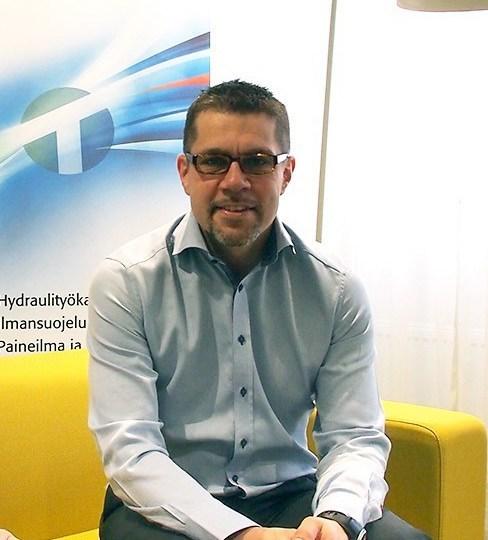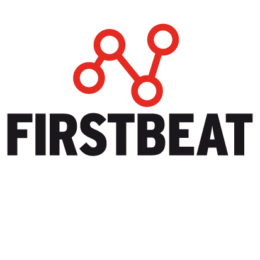
“Conducting the Lifestyle Assessment during organizational change was useful because it helped people realize that stress and recovery matter in terms of coping”, notes Harri Välimaa, CEO of TECA Ltd.
In the spring of 2014, TECA was going through big structural changes. TECA has been operating under its current name and personnel since the beginning of 2014. Before that, the company had gone through two corporate mergers within two years. Monitoring stress and recovery during this hectic phase reminded the staff members of the importance of maintaining their wellness.

TECA imports, sells, installs and maintains technical products and systems for industrial companies. TECA’s personnel sells, manages
products and providescustomer service. In addition, ten out of 47 employees are working with maintenance and manufacturing.
“Our office workers and sales personnel are most likely to suffer from the disadvantages of sitting down too much, since they sit in front of a computer or drive for several hours a day. On the other hand, people working in storage or manufacturing face the challenges of demanding physical work,” Välimaa explains.
Change Causes Stress
During the organizational changes last spring, the company management wanted to pay attention to organizational well-being. Välimaa thought that the timing was excellent, since many employees felt stressed because of the changes. This was verified in the Firstbeat Lifestyle Assessment pre-questionnaire, in which more than 50% of the employees checked that they were experiencing stress. The management wanted to encourage people to take care of their well-being.
“I had understood that heart rate variability analysis enables you to illustrate stress and recovery in a way that is easy to interpret and understand. I wanted our personnel to understand that there is more to stress than just work. People exist 24 hours a day and all activities during the day affect well-being,” Välimaa says.
Almost all staff members participated in the measurement with enthusiasm and an open mind. Firstbeat Wellness Specialist Satu Tuominen appreciates this because Lifestyle Assessment was of course voluntary.
“This proves that TECA’s management is committed to promoting staff wellness and has also been able to motivate the employees,” Tuominen explains.
Välimaa is delighted on how the assessment was organized. The personnel didn’t have big questions or doubts because they were well informed about the project beforehand. The Lifestyle Assessment process was also introduced in an Info meeting during which the measurement devices were given out.
“Providing the feedback was also very well organized from our point of view. The feedback session was organized in our main office and our employees in other cities were given individual feedback via phone. I found this extremely important,” Välimaa points out.
Measurement Illustrates the Importance of Recovery
The most discussed topics after getting the measurement results were sleep, rest and recovery. The results suggest that the employees of TECA have too little recovery both at work and during the night sleep, but the quality of their recovery is better than average. The results also verified that the experienced stress (as indicated in the pre-questionnaire) was seen in physiological values as well.
“A healthy lifestyle and exercise explains part of the result. When the personnel is physically fit, they can handle more stressful work and the quality of their recovery stays good, even if the amount of recovery might be insufficient,” Tuominen explains the measurement results.
“The results were eye-opening since we found out that we are not recovering enough. The measurement showed that during big changes, people are more sensitive, and then it’s the management’s job to make sure that the team is functioning and its members are feeling well,” Välimaa points out.
Välimaa found his own personal results to be as expected. The soon 45-year-old CEO and triathlete strives to keep his nutrition, rest and exercise in balance in order to perform better at work.
“My sleep was of good quality, but during the working day, there was little or no recovery. One of my action points was to drink more water during the day and I have been paying attention to that,” Välimaa explains.
Well-Being is a Common Matter
The Lifestyle Assessment results gave no reason to conduct major action points at organizational level. The staff members’ knowledge about their own well-being improved, and some of them did consult occupational healthcare for further tests.
“A follow-up measurement would be a good idea during the busy spring season. The organization is now functioning normally and the results might be different because the overall situation is not that stressful,” Välimaa looks ahead.
Välimaa emphasizes that well-being depends on the individual’s own choices. Even though an organization supports its employees, the results will not be reached if the individual is not committed.
“We gained what we were looking for from the measurement: Information about the well-being of our crew and opening people’s eyes for individual wellness. We have recently decided to participate in the Helsinki City Run (half-marathon) and we already have 14 employees enrolled. I am positively surprised that they are this interested,” Välimaa concludes.
If you liked this article, you should subscribe to our mailing list
You might also be interested in

Firstbeat Technology Helps Optimize Training and Performance of German Ice Hockey Teams
The German Ice Hockey Federation (DEB) and Firstbeat have been in close partnership for many years, with the Federation utilizing the athlete performance management platform to optimize the training and…

Removing the Guesswork from Women’s Basketball Coaching with Firstbeat
It takes up a little bit more of my time, but I’d rather not guess. You can see when people are tired but if you’re a good strength coach, you want to figure out why. Firstbeat gives you enough information to figure out why someone is tired or why someone is not tired.
